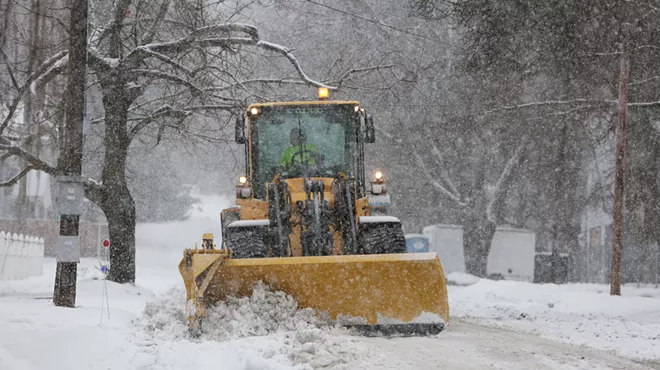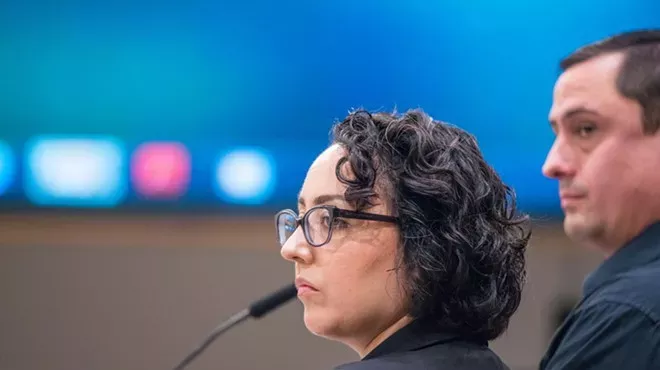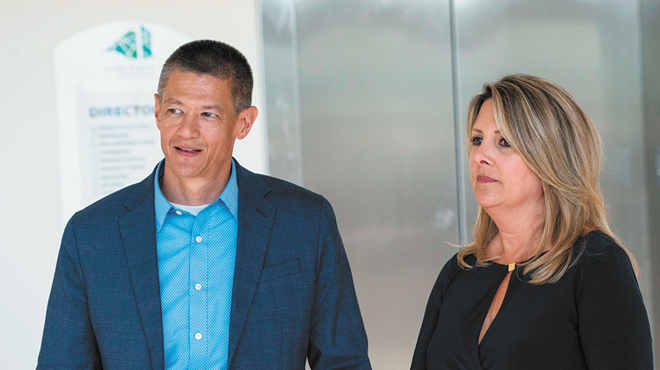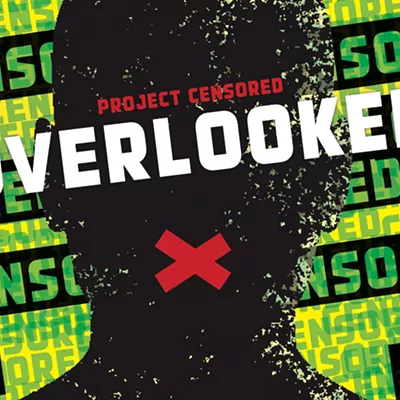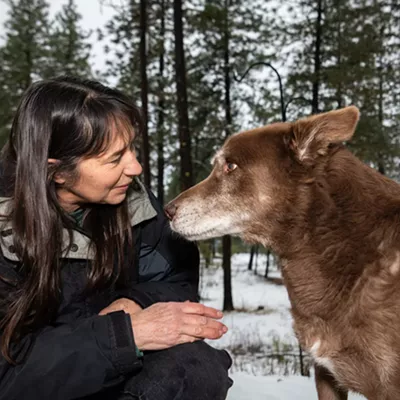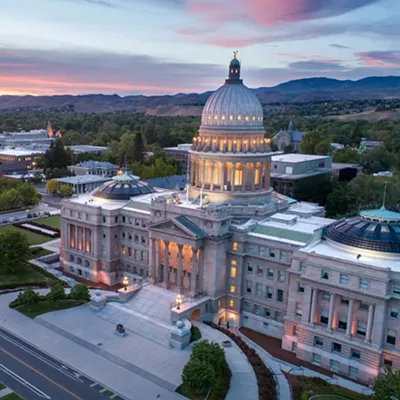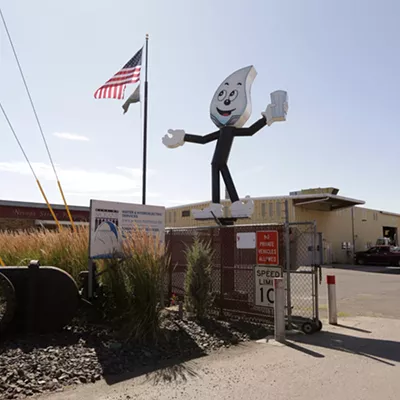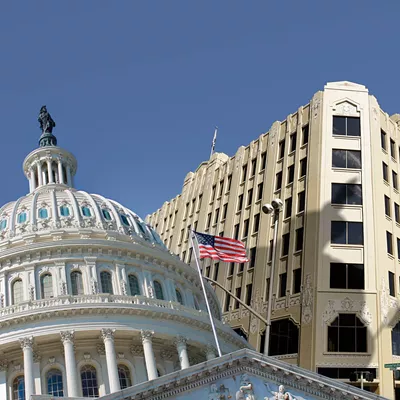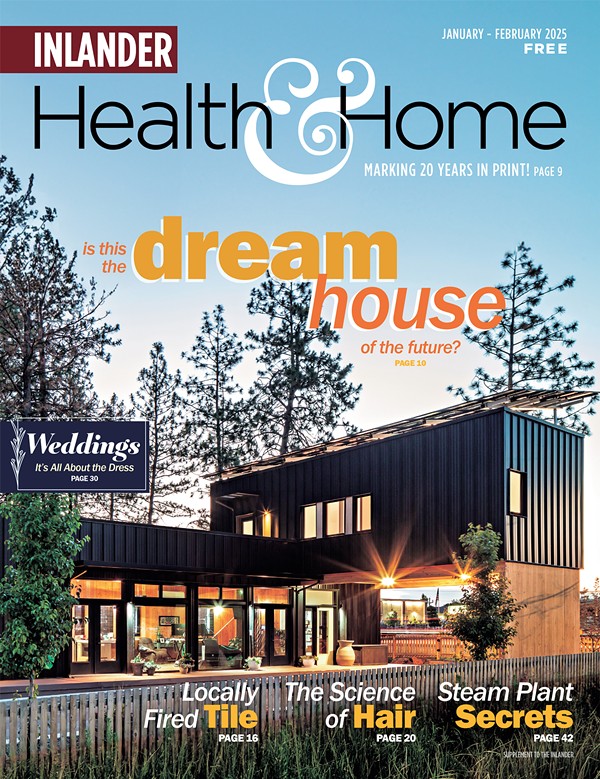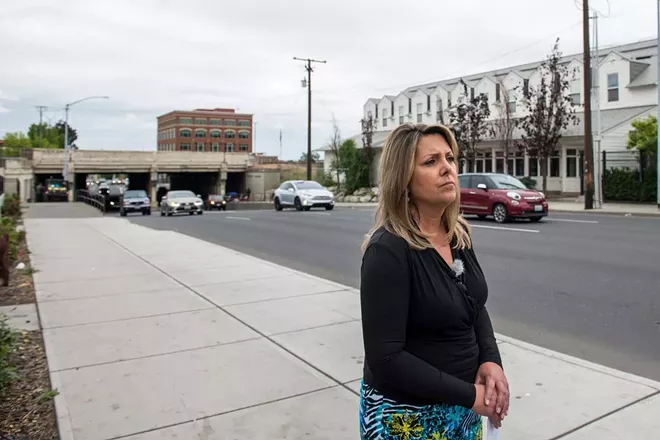
At moments, Mayor Nadine Woodward's press conference yesterday had echoes of her 2019 salvos against the city's record on homelessness.
Following the Sunday shuttering of Spokane's convention center space as an ad-hoc emergency warming center, Woodward described at length the damage — over $90,000 —that she said had been done to the facility.
"For people who maybe aren't used to being indoors and have been living outside for so long, many of them have been using banquet chairs for toilets," Woodward said."Toilet seats were broken. Mirrors were smashed. Holes in the walls, lots of destruction: outlets that were kicked and no longer usable. Just the biohazard service crews who are coming in to clean the carpeting is about $40,000."
It's the sort of description she used in her "Seattle is Dying"-style critique of the city during her campaign, arguing that the city's low-barrier approach was enabling the homeless, not helping them.
But the big difference now is that instead of being able to show those incidents as the failure of a city strategy, it's her strategy. She was the one who called the convention center to ask them to assist.
"I said, 'Hey, we've got this weather, and we need to figure something out,'" Woodward says. "'Can we use the convention center?' And that's how we ended up at the convention center."
Her administration was the one that made a decision to extend the shelter another week and her administration has now put out another call to try to, once again, find last-minute emergency warming center space.
And in July, she slammed the City Council for proposing an ordinance to mandate cooling and warming centers, arguing that many of the proposed beds would be "never used."
As Woodward has noted, her administration has brought more permanent shelter space online, including the Cannon street shelter and a young adult shelter. Yet her critics have also pointed to times her administration has passed by opportunities to add more shelter space.
And like the Condon administration, the Woodward administration has repeatedly appeared to be unprepared for the seasonal surge in homeless people needing shelter.
Yet despite the near-collapse of the city's Community Housing and Human Services department this summer, the Woodward administration didn't seem publicly concerned about the lack of a plan for a warming center space even as winter began.
While the city council had passed an ordinance mandating the department provide a warming and cooling center plan "no later than September 30 of each year," city spokesman Brian Coddington told the Inlander in November that they had no plan to open up warming centers, and would instead rely on permanent shelter space and vouchers for hotel rooms. City council members heard similar assurances.
"There certainly was an expectation that we had enough shelter space up until the point that it got below the 32 degrees," City Councilman Michael Cathcart says.
But the city's daily reports on the availability of low-barrier shelter beds have repeatedly come under fire, with homelessness activists and some council members arguing the city's figures have been inaccurate, miscategorized, or double-counted.
And when the temperature dropped below freezing, it meant many of the people who had been camping throughout the entire region needed a place to seek safety.
Fire Chief Brian Schaeffer says he witnessed vehicles arriving with 20 to 30 people at the convention center, including from "camps in Mead, camps in Spokane Valley, and camps from the west side of Spokane [County]."
Councilman Zack Zappone was critical of the mayor's rhetoric around the damage to the convention center, suggesting the city bore part of the blame for the damage done.
As a teacher, he says, if half of his class fails his test, he doesn't blame his students.
"I look at it as a reflection of my lesson," Zappone says. "What can I do better?"
Kinnear struck similar notes, arguing that only having a single major warming center location was setting the convention center up for failure.
Zappone and four other council members signed a letter on Tuesday asking the mayor and city administrator a number of questions they'd received from the community, including why the city hadn't published an emergency shelter plan. The two conservative council members, Cathcart and Jonathan Bingle, declined to join in, expressing concern that the letter could be seen as blaming the Woodward administration for the situation.
"The trouble is that I knew we didn't have the proper space for this," PFD CEO Stephanie Curran says. "But I didn't feel like I could say no. We didn't want people to freeze on the street."
Woodward asked council members to help her administration in the search for new warming center locations.
It has to be away from daycares and schools, she says. And it has to be a larger building with at least 20,000 square feet.
But a larger size may just mean replicating the problems seen at the convention center, Kinnear says.
"We’re looking for a model that is going to house a great number of people under one roof," Kinnear says. "To me, it spells disaster."
Curran agrees that putting 300 people in a single space is not the answer. Last week, she wrote a response to Sheldon Jackson, a local business owner who organized other business owners in objecting to the city's response to homelessness. In her email, she briefly summarized the sheer quantity of problems her staff faced, from the vandalized bathrooms to the sheer amount of weapons that had been confiscated.
But by that, Curran tells the Inlander, she doesn't mean that people who don't want help should just freeze. She argues there needs to be a different kind of response to help both groups.
The eighty-some banquet chairs ruined, the carpet a warming-center guest casually drug his knife through, those are just things, she says.
"Damage is damage," Curran says. "Those are all things that can be replaced. What is more upsetting to me, is what got a person to a place where they did this damage."
The silver lining, she says, is showing the Inland Northwest community the sheer scale of what it has to grapple with when it comes to trying to reduce homelessness.
And Woodward, for her part, says she's learned — and not for the first time — how much more challenging homelessness is than she thought when she was running her campaign.

